“If you care about having a company where employees treat work as play and regard themselves as ultimate customers for the products they produce, then you have to be careful whom you hire, treat them right, and train them to treat other people right. Otherwise you may come to work one day and find it isn’t a place you want to be anymore.”
(Excerpted from Let My People Go Surfing, by Patagonia founder/owner Yvon Chouinard)
Taking a deeper dive into our Q2 theme “Community” we have a chance to speak with Vincent Stanley, Director, Patagonia Philosophy, at the climbing and outdoor apparel company.
Vincent has been involved with Patagonia in a variety of roles since its beginning in 1973 and co-authored The Responsible Company with Patagonia founder, Yvon Chouinard.
Patagonia has been a leader in advocating for sustainability and ecological responsibility in all aspects of business. Patagonia has attained major growth and now approaches $1 billion in sales annually.
This success springs from Patagonia’s original mission:
Build the best product, cause no unnecessary harm, use business to inspire and implement solutions to the environmental crisis.
Here are six unconventional, world-changing insights from Vincent Stanley’s experience contributing to a business that’s also a purposeful community.

What lessons can we learn from a pioneering company to build our community?
How can we create alignment so that all stakeholders are connected with shared values?
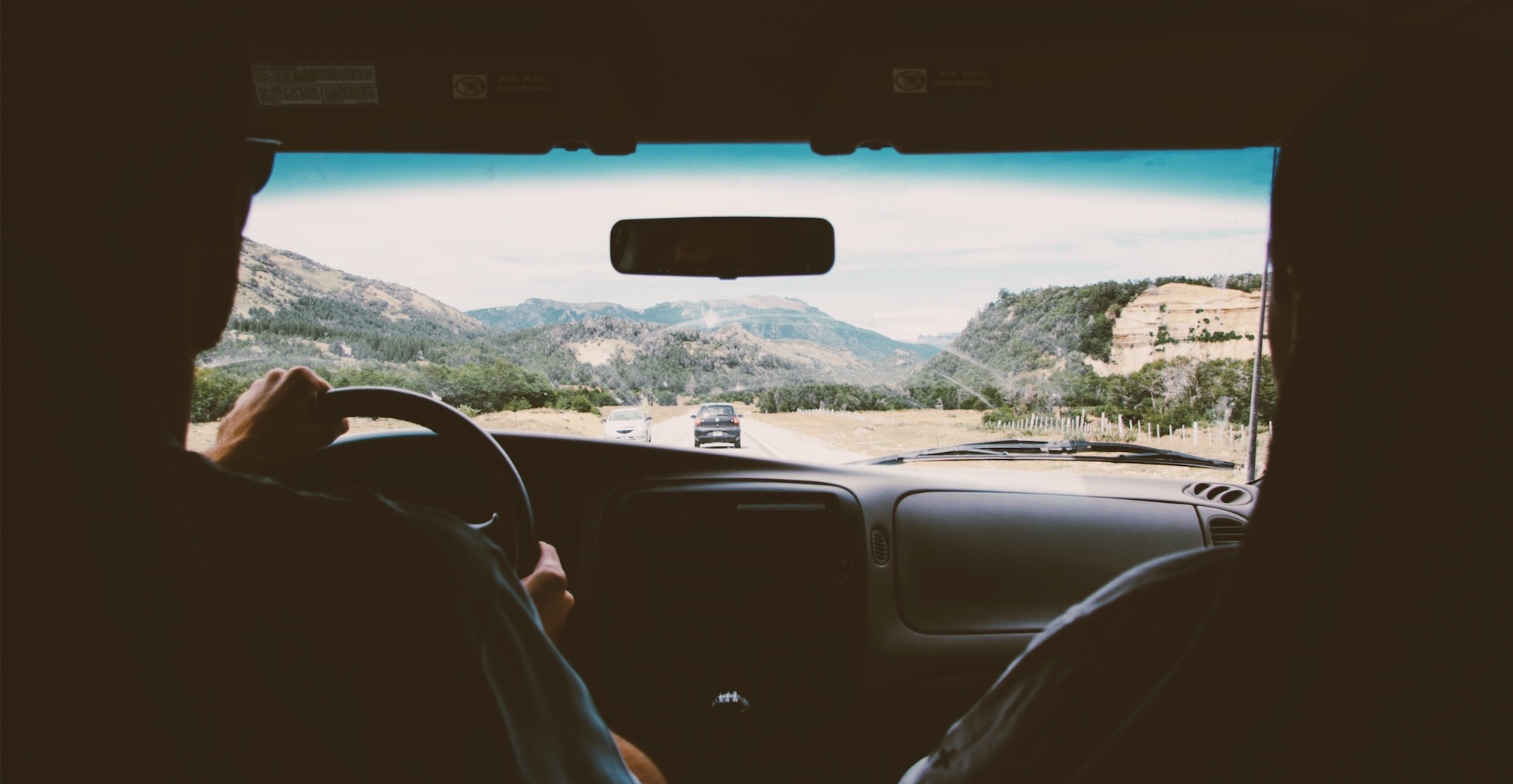
Community of Friends
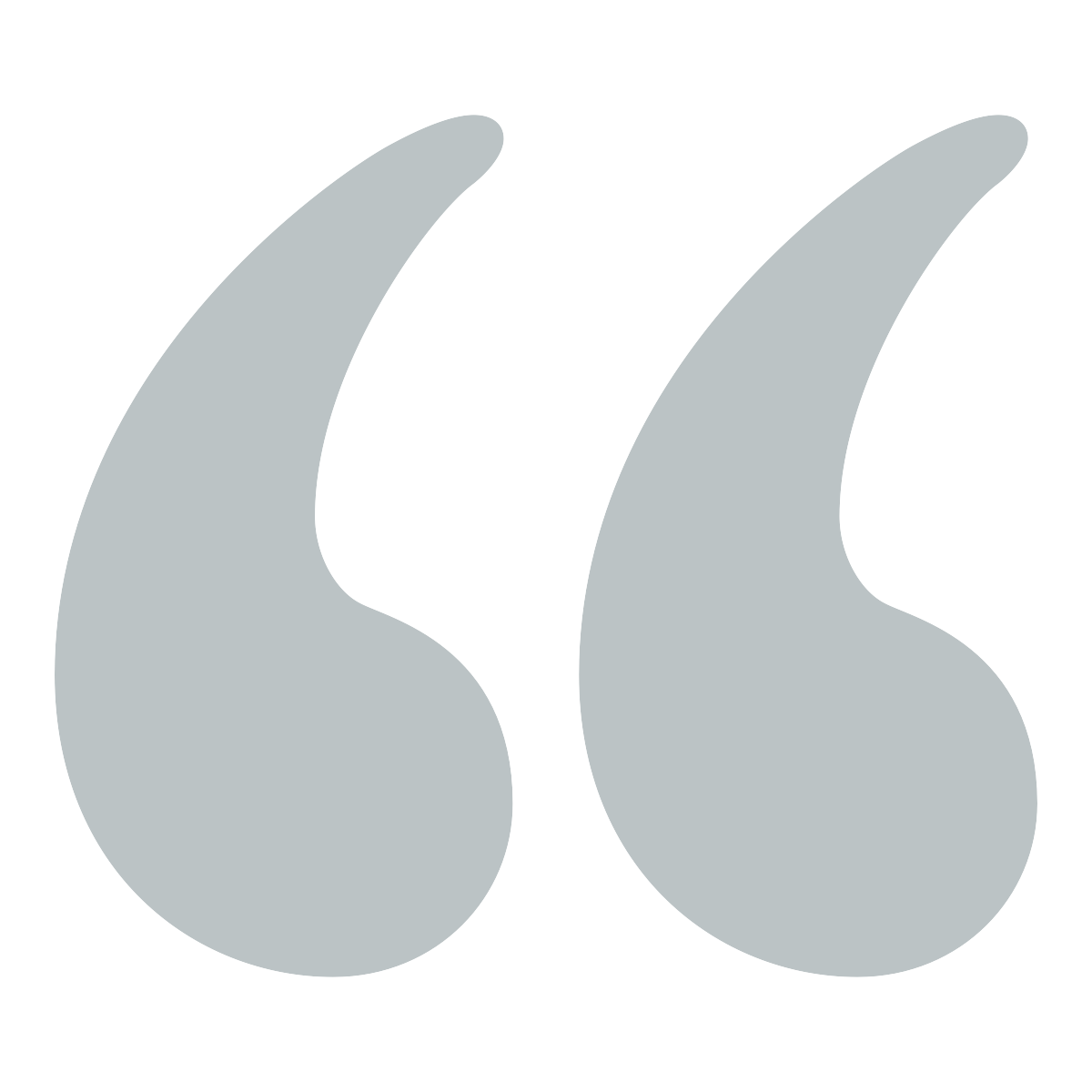 We got our start as a climbing equipment company and it was tiny. I think when I joined it was $300,000 a year but was one of the leading climbing equipment companies in the world. There were probably no more than three degrees of separation between all the climbers in the world. Everyone was a friend of a friend of a friend.
We got our start as a climbing equipment company and it was tiny. I think when I joined it was $300,000 a year but was one of the leading climbing equipment companies in the world. There were probably no more than three degrees of separation between all the climbers in the world. Everyone was a friend of a friend of a friend.
The British and Chamonix and Australian climbers would come to Ventura and spend the night on someone’s couch or in someone’s yard. So, the business was embedded in the climbing community. When we got into the clothing business, we treated customers as friends and friends of friends.
We also, at Malinda Chouinard’s insistence, added onsite child care early on. That changes the workplace phenomenally. You walk outside and you’re having your lunch at the picnic table and you’ve got the sound of kids playing in the yard.
It’s very difficult when they’re around to create or tolerate stiff work culture. Really, it’s true. If they’re not playing in the yard, then they’re being led in wagons by their day care providers across the yard and parents are visiting their kids or having a meal with them.
Those two things, I think, climbing and kids, contributed mightily to the sense that we are a community and we work together beyond just the confines of business.

What happens when we think about our customers as friends?
Does this change the way we sell?
Does it change the quality of the products/services we sell to them?
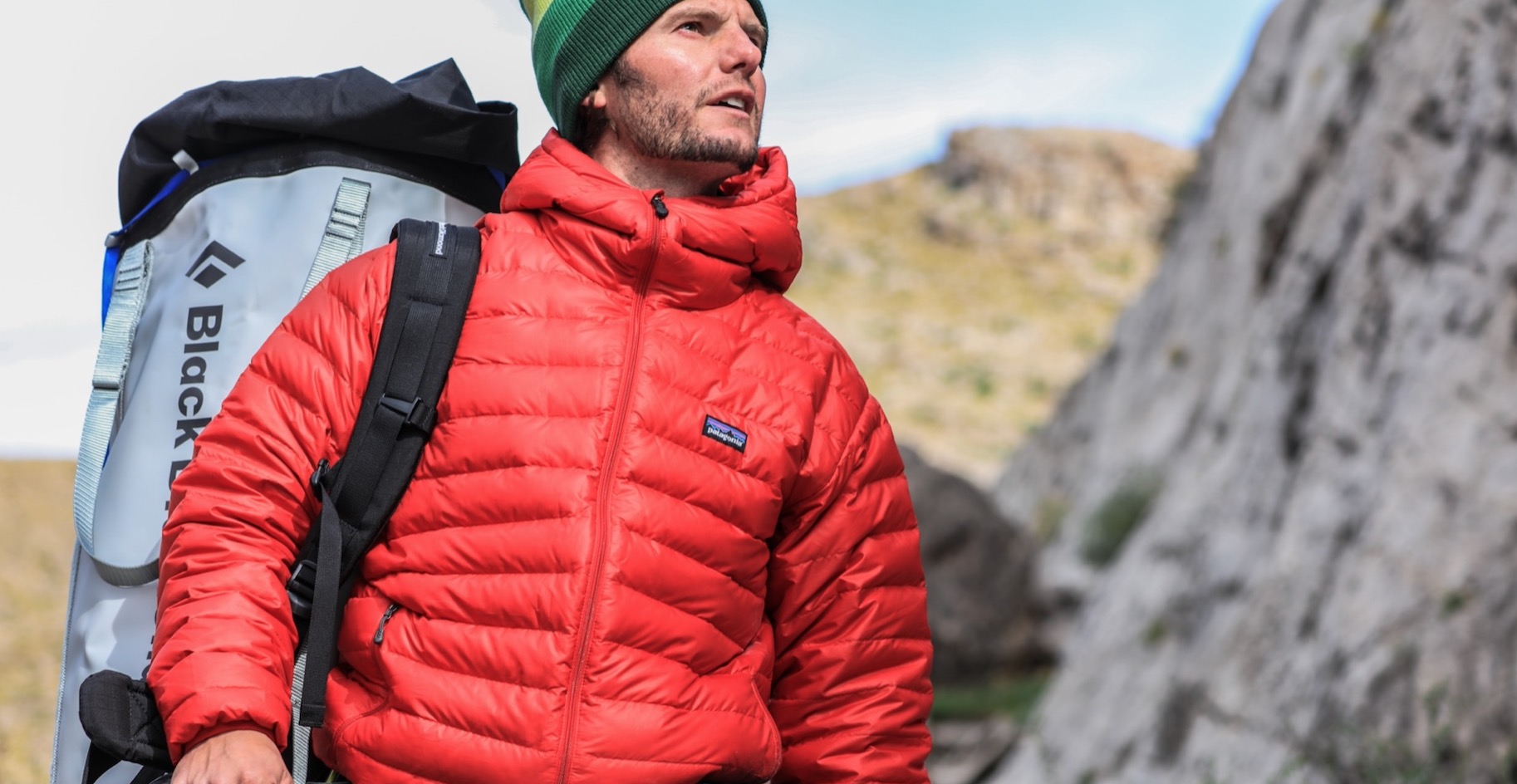
Conscious Communication
 It was easy for us to feel a sense of responsibility to each other and easy for the people who own the company to feel a sense of responsibility to their employees they ran into on site. Then, gradually, I think we started to assume a greater sense of responsibility for actions that took place outside Ventura.
It was easy for us to feel a sense of responsibility to each other and easy for the people who own the company to feel a sense of responsibility to their employees they ran into on site. Then, gradually, I think we started to assume a greater sense of responsibility for actions that took place outside Ventura.
The first environmental step the company took, was really significant. Chouinard Equipment’s main product was a hard steel piton, which made its reputation. The problem was that increased popularity of climbing placed increased pressure on the classic routes. Every time you hammered one of these pitons into a crack it enlarged it slightly.
The people who worked at the company faced this moral dilemma, that the very way they made their living was destroying their sport and desecrating the rock.
They made a very conscious decision to ask, “Okay, is there anything we can do differently?” And there was, because British climbers had developed another system for climbing cracks that involved placing machine nuts called chocks that you could twist into a crack and it would hold under body weight without the use of a hammer. The company decided to make its own version of aluminum chocks but it was a stretch for American climbers. You’re asking climbers used to hammering hard steel into granite to daintily place this aluminum nut and expect it to hold.
What we did, we published a catalog with a long article that was part manifesto and part user’s guide, telling climbers why they should switch to chocks and then how to use them. chocks. The article was phenomenally influential successful. Within nine months the business had transitioned from 70% dependence on pitons to 70% chocks—that article was discussed in every climbing magazine and every climbing club and at the base of every route.
That gave us the confidence that, when we spoke to our customers as grownups and as friends, we could bring them along. We could get people to see the same things that we saw, that we had come to see.
This, in effect, has also worked not just with our customers, but also with our employees and with our suppliers and the communities we were involved in. That style of communication and transparency has been with the company ever since. I think we view almost everybody we deal with as part of our community; customers, suppliers, employees.

The purpose, or noble goal, for Patagonia is supporting a sustainable community. That requires deep relationships with suppliers, employees, customers. Purpose shifts thinking to the long-term.
Is your company making decisions based on a noble goal? Would that increase alignment and loyalty?
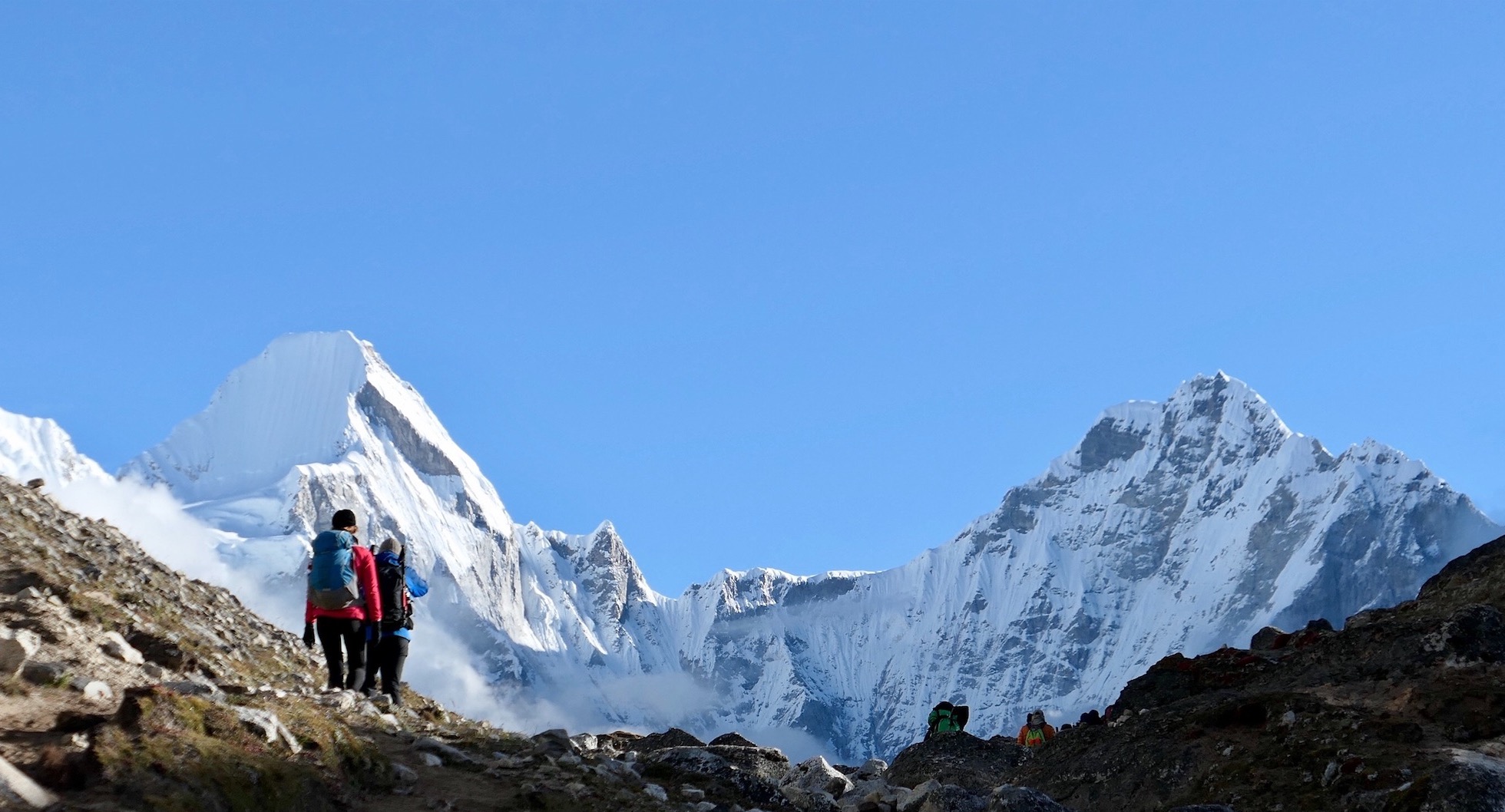
Relational not Transactional
 We had the same challenge 20 years later when we discovered how harmful conventional cotton is because of the extensive use of pesticides.
We had the same challenge 20 years later when we discovered how harmful conventional cotton is because of the extensive use of pesticides.
When we decided to change entirely from conventional to organic cotton it took a lot of work with our employees, as well as our customers. Where we had relied on a global supply chain that was very easy to plug in and play, we now switched to ordering cotton from farmers—and the farmers don’t have relationships with everybody else down the supply chain. We ended up asking our employees to find an entirely new infrastructure for cotton sportswear.
Our production people were saying, “Listen, I’ve got to do everything I did last season plus go out and find new spinners, weavers and knitters. We have to raise our prices. And not a single customer has ever asked for organic cotton. Why are we the crazy ones?”
So, we rented buses and took our people, not just designers and production folks, but everybody in the company in small groups out to the cotton fields to show them the difference between a conventional cotton field and an organic field.
There people could actually smell the organophosphates on a conventional field and see that there were no birds anywhere nearby or dip their hands into the soil and know that there were no earthworms, which don’t come back until three years after you stop spraying. That made a huge difference.
Then we’d take them to an organic farm that didn’t smell like a factory, where there were birds and worms and vegetation. People would come back from those trips and say, “Okay, this is a royal pain, but this is worth it. We’re doing the right thing.” That creates a level of shared commitment and engagement with your employees that most companies don’t have. But companies can have this when they actually engage with their employees as grownups and say, “Okay, not only are we going to make whatever we’re going to make, blackberry ice cream or machine tools, we’re going to do this in a way that’s environmentally and socially responsible and we need your help to do it.”
I think that one of the gifts of being in the climbing business is nothing is transactional.
I used to inspect ice axes for hairline fractures, and you don’t fall asleep on the job doing that. You know that everything is relational, because people’s lives depend on the quality of your work and the quality of your product. When that’s ingrained in your work it does create a very different view of what a customer is or what a community is.

Patagonia understood the rock wasn’t disposable and neither were their customers, or associates, or suppliers. They invested in changing those relationships and teaching, and learning, and doing it together.
To build alignment, Patagonia created a shared understanding. It wasn’t enough to TELL people, they experienced it first-hand. Why? Because the company’s work is build on relationships, not transactions.
A “vital organization” is a place where people feel connected, feel this is OUR work, OUR mission, OUR community? Do your employees, leadership and customers participate in that goal?
Why does it matter? A community of purpose works together to do accomplish hard things together.
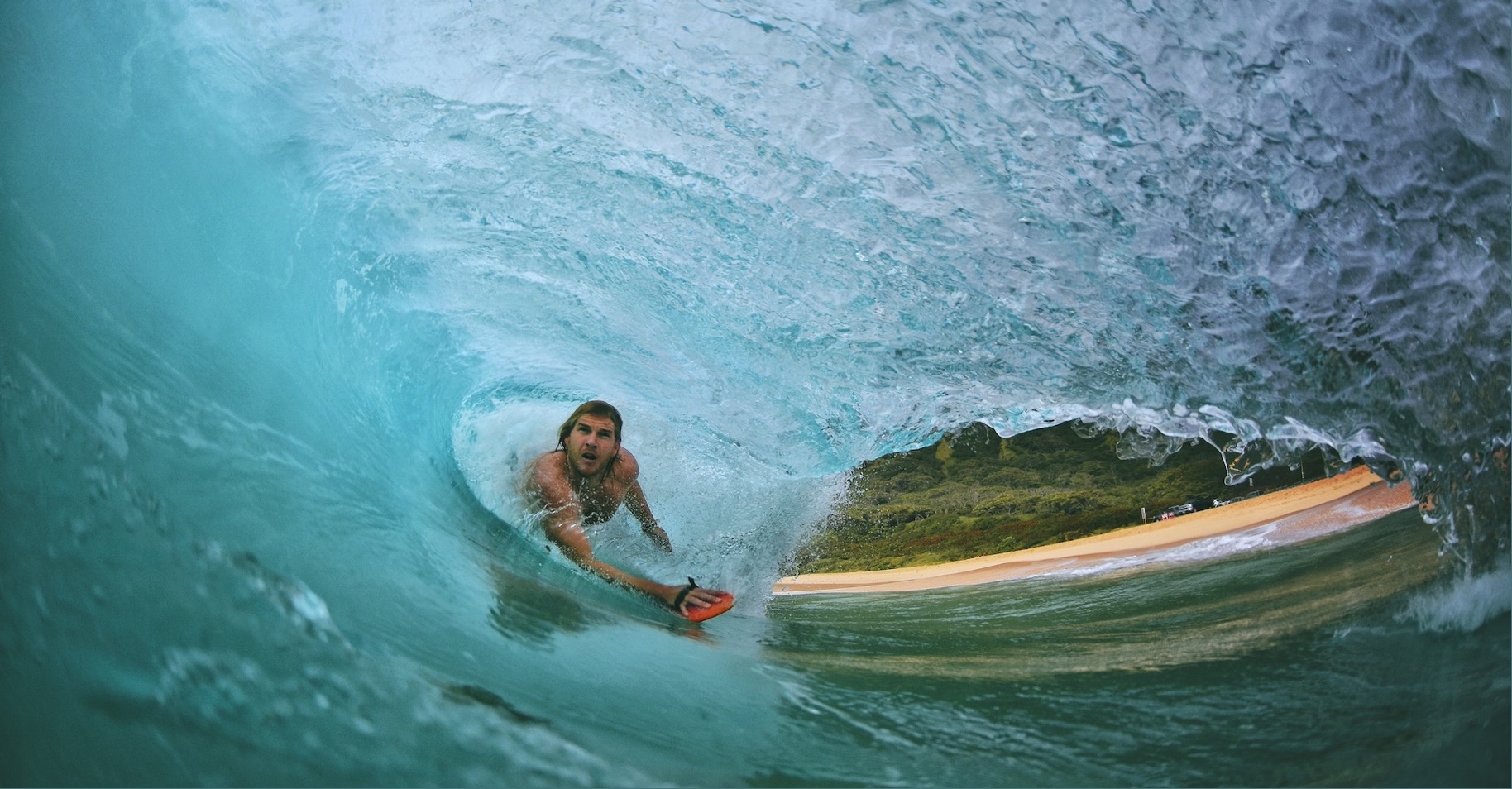
Love of Wild Places
 From the very beginning was, there was a strong sense and a strong shared value of a love of wild places and that feeling you have when you get a mile from the road if you’re a climber or, if you’re a surfer, when you get 10 feet from the sand, and you’re dealing with the power of the wind and the waves. You’re dealing with yourself as a person and, on the one hand, you’re more humble and, on the other hand, more self-reliant.
From the very beginning was, there was a strong sense and a strong shared value of a love of wild places and that feeling you have when you get a mile from the road if you’re a climber or, if you’re a surfer, when you get 10 feet from the sand, and you’re dealing with the power of the wind and the waves. You’re dealing with yourself as a person and, on the one hand, you’re more humble and, on the other hand, more self-reliant.
This is a set of values that were really strong from the beginning, but our people thought of Nature as climbing in Yosemite and Kilimanjaro, skiing in Hokkaido. We didn’t really think of nature very deeply until this incident with the Ventura River, which flows right outside our headquarters and, like most southern California streams, only reaches the ocean with a major storm.
In the early 1970’s, the Army Corps of Engineers came to town and they said, “Listen, we would like to solve your flooding problems and we’d like to take the Ventura River and encase it in concrete and we’ll pay for it. All we need to do is declare the river dead and you’ll never have to worry about another flood.” Everybody on the Ventura City Council thought this was a great idea and it would be just like the lovely L.A. River.
I think that people from Patagonia went to the city council meeting mostly because they were worried about how canalizing the river might affect a local surf break. Every public comment was in favor, great, go for it, except at the very end, this 25-year-old biology student gets up with slides of 40 different species that live in the river.
Frog, birds, and in the last slide there was a steelhead smolt. The Ventura River, before the dam had been built (and soon silted over), had been one of the major steelhead streams on the West Coast. What the 25-year-old student said was, “No, we don’t need to declare the river dead. We need to restore it to life.”
That was an eye opener for us because it showed us that this funny little town we lived in, this oil patch, lemon packing town, was also Nature, and we started to learn that the health of nature and natural systems underpins social and human health.
We gave this student a mailbox and a phone and a desk. His little group, Friends of the Ventura River, became the prototype for the kind of grassroots organizations we supported when we started to give 1% of sales to grassroots environmental organizations.
We were looking for really passionate people who had roots and connections in the community who were working to save a particular patch of land or stretch of water. This grassroots work also connects saving wild places with the community as a whole because you can’t get people to save something they don’t care about.
One of the things we do now with every retail store, we have about 30 in North America, is to develop strong relationships with local environmental organizations. We host a lot of events. Our retail employees do internships with local groups. They have their own budget to give their own grants.
There’s a connection, I think, between environmentalism and community that is absolutely essential. You’re not going to save your watershed, you’re not going to care about your watershed, unless you know where it is and you can get to it, you know what lives there, you’ve seen it.
 Individually, our brains are wired to form and follow patterns. It’s one reason groups, communities, get stuck in one way of thinking. How do we stop and see alternatives? Exercising optimism helps. So does connecting with empathy – caring unlocks courage.
Individually, our brains are wired to form and follow patterns. It’s one reason groups, communities, get stuck in one way of thinking. How do we stop and see alternatives? Exercising optimism helps. So does connecting with empathy – caring unlocks courage.
Patagonia broke through their pattern of seeing NATURE as some place far away, an abstract place outside of the everyday experience. When faced with an environmental crisis in their own backyard, they made a shift in thinking by CARING. They felt the importance.
“the health of nature and natural systems underpins social and human health” -@VincentStanle10
What patterns have you established about your customers and community?
What do you and others care about, that could be used to help you see the situation in new ways?
Are you building a community? What does “community” mean… and how does emotional intelligence help it grow?
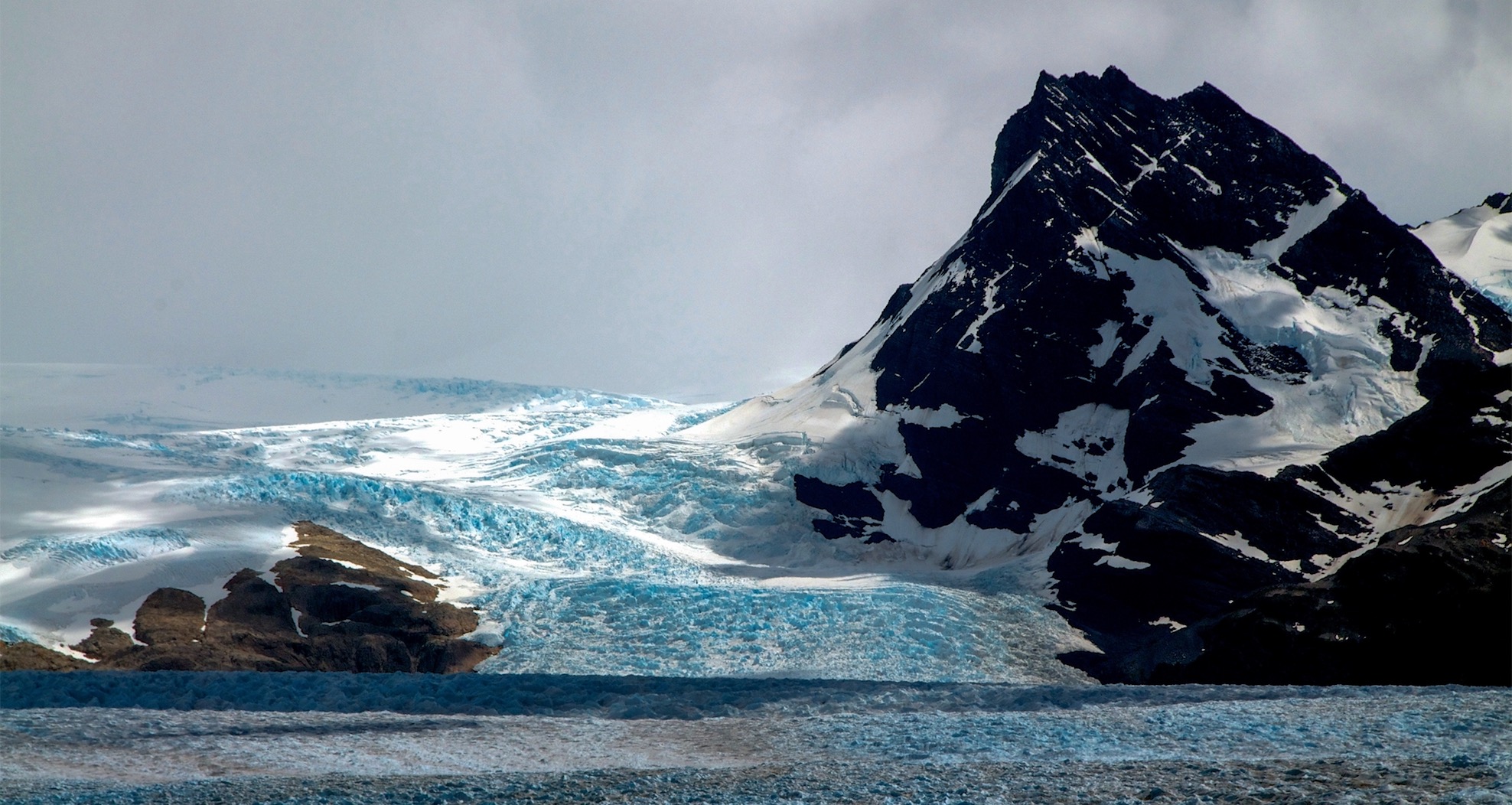
Confidence to Disrupt
 When things don’t go as planned, we rely on our community. We have some experience with this, and it’s cumulative and has accelerated over the past 20 years, you gain a kind of cultural confidence.
When things don’t go as planned, we rely on our community. We have some experience with this, and it’s cumulative and has accelerated over the past 20 years, you gain a kind of cultural confidence.
That when you face a problem, rather than just turning your head away, you know you can work with other people to come up with a solution and also that that solution won’t be bad for the business.
Ultimately, almost everything we’ve done out of a sense of constraint, let’s not use this dye, let’s make sure our goose down comes from birds not being grown for foie gras—almost in every case we end up with some kind of innovation that is actually useful for the company.
About 15 years ago we had different constituencies within the company. You have this strong environmental bent in the owners and many of the middle managers of the company. You also had some strong product people who are working hard to build the best rain jacket and they want to be a couple of years ahead of everybody else. They want to use the best materials. Maybe they didn’t come out of environmentalism. Then you’ve got people who see the company growing from a certain size to another size. They’re working on the systems that will help the company function as a larger company.
All these different groups, they’re not necessarily seeing eye to eye. You saw that the enviros are kind of regarded as tree huggers, and the product people as go getters, and the financial people as bean counters, but nobody wins. They all have to deal with each other as part of the community. Over time, the company advances in each of those areas. Its operations are getting stronger, its products are getting stronger, and its environmental commitment is growing.
What I’ve seen over the past few years, it’s very different and much more effective. I’ve seen people internalize those three things. I’ve seen groups internalize that. So, if I’m a product manager, I know that I’ve got to make the best raincoat, but I have to meet my margin and my sales goals and I’ve got a commitment to make 40% more in fair trade certified factories and a commitment to reduce the toxicity of the chemicals used. All that is voluntarily adopted. As a manager, I’m not relying on somebody else in the company to come slap my hand. This is all part of my job. That makes all the difference in the world. Things happen much faster.
Work is much more productive, internal politics are reduced, and you get a much stronger sense of the community because everybody’s on the same page. I don’t think that translates to received wisdom or group think. Everybody is arguing about everything all the time but having that kind of holistic respect for all parts of the work makes a huge difference.
That synthesis was evolutionary. It wasn’t intentional. I think that part of it was that we learned how to manage the company better and that the people who were in the senior positions were more in alignment with the owners and with the middle management.
Part of it is just experience and that sense of having, “We did this before and the problem we are facing now is not insurmountable.”
 Spark of innovation comes from all kinds of places.
Spark of innovation comes from all kinds of places.
“Constraints” can be the hard steel that flint strikes against.
How does your organization view constraints? Can you flip them from being limitations to possibilities? Think about opening the problem by zooming out “if we change this what will be the long term effect?”
Sometimes changing the scale of time can help clarify the innovations that need to be made.
To get all the parts of the company pulling together: First — each team needs to know and value how the contributions of the other teams is essential to overall success. It’s about having “line of sight” so people can see others’ value.
Second — overcoming problems builds muscles in the organization. Because the team knows they’ve faced challenges before they feel capable of taking on the next one. The shared experience brings teams together and makes them stronger for the future.
How can your organization help people see one another’s contributions to purpose? What past challenges can fuel your next steps?
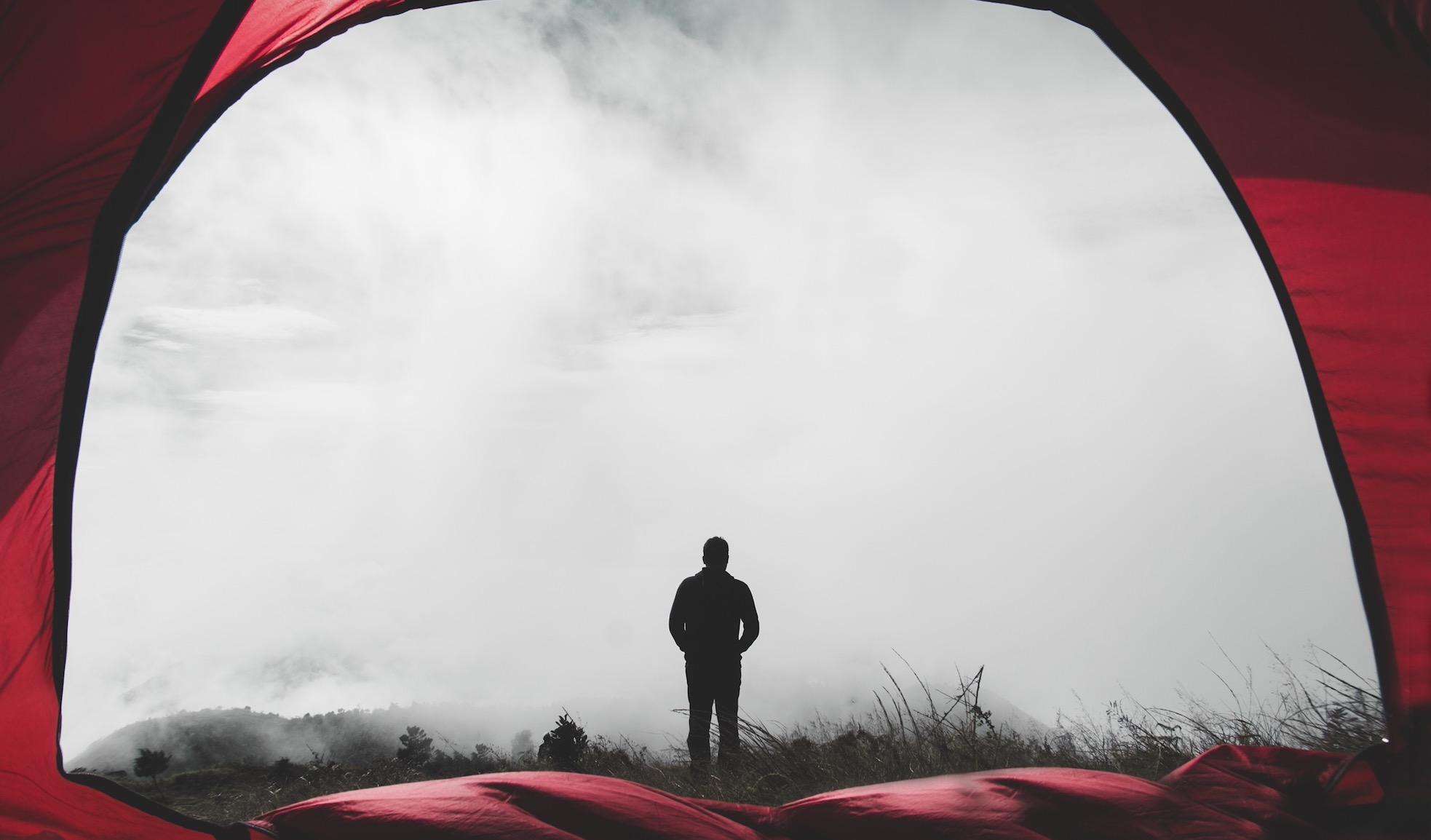
The Future is Theirs
 I think businesses need to extend their ownership of responsibility to the whole supply chain. One of the realities of the world, and of the global economy, is a very deep and wide ranging supply chain.
I think businesses need to extend their ownership of responsibility to the whole supply chain. One of the realities of the world, and of the global economy, is a very deep and wide ranging supply chain.
About eight years ago we helped start an industry association that looks at the environmental and social implications of footwear and apparel manufacturing. The members of the Sustainable Apparel Coalition now represent 50% of all the clothing and footwear sold in the world.
They’ve taken measurements in 6,000 factories of energy, water used, waste generated, greenhouse gases generated, and developed computer systems for both factories and brands to reduce the environmental impact of their clothes.
I think it’s important if you’ve got a purpose to reduce the harm the business does and, where possible, do positive good. You want to generate a new community of people who will participate with you.
I would never be afraid at this point, having been with Patagonia for so long, to reach out to anybody to say, “Hey listen, you can help us do something about this.”
 What would it take follow Vincent’s wisdom “to generate a new community of people who will participate with you”?
What would it take follow Vincent’s wisdom “to generate a new community of people who will participate with you”?
Do people in your organization feel connected to a shared purpose? What’s the future community you’re serving? What would happen if people knew the answer and felt the answer?
Are you ready to climb that mountain?
- Lessons from Patagonia - May 15, 2018
- How to Lead People in a VUCA World: Siemens Case - April 25, 2018
- Practicing Music: Creating Food for the Soul - March 11, 2018


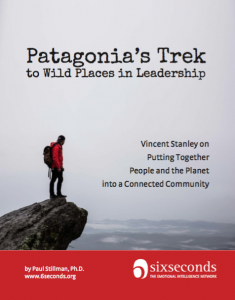
Wonderful article! I can see how the Six Seconds EQ Model and Vital Signs can be adopted applied in organisation. Can I get a PDF copy of this article? I can use it as a case study. Thanks
Dear Steven – if you’ll send me an email at [email protected], I’ll get you a PDF copy. Thanks!
Excellent role model for business, family, life. Thank you!